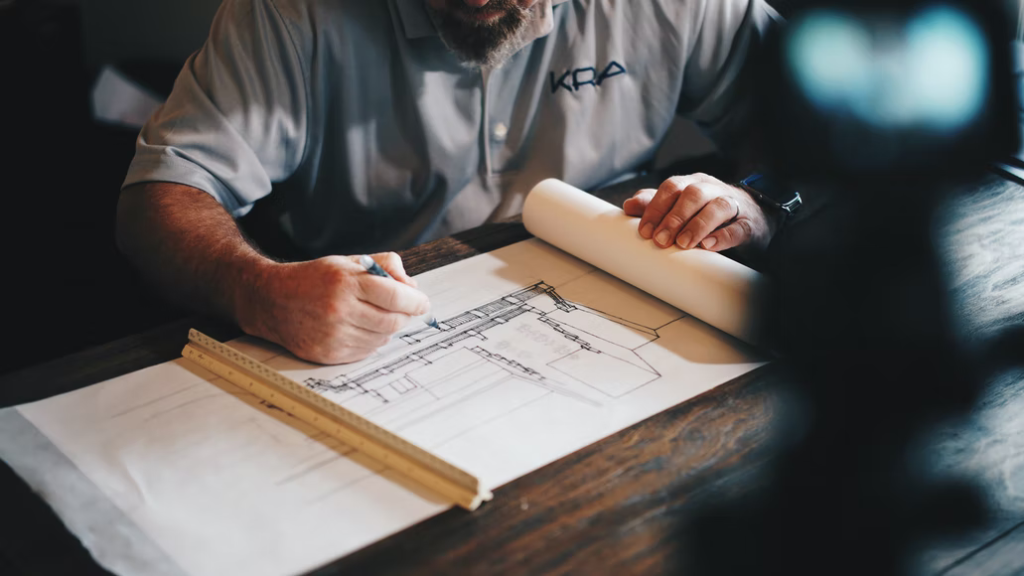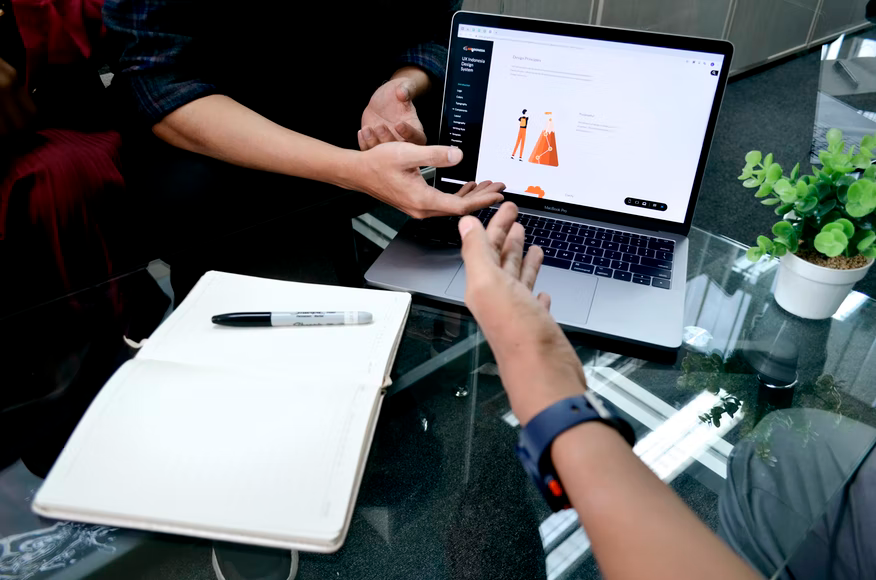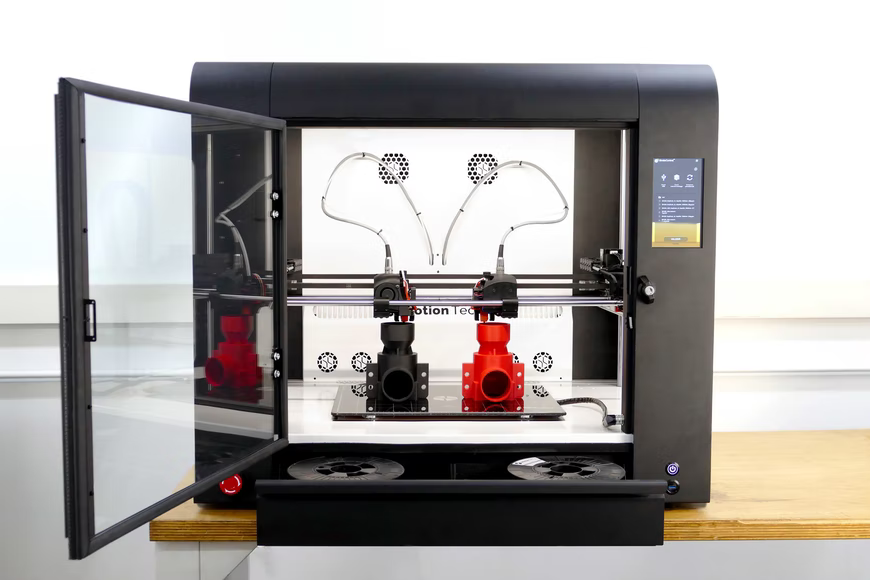Product designing is a term that is gaining popularity across disciplines. A startup developing software-as-a-service will describe it as a product. The same applies to physical consumer products that you can pick off a shelf in a store or warehouse. That leaves us questioning, what is product designing? Has it been in existence, and if so, how was its evolution? Why does it matter, and how can brands utilize it to balance business goals and user needs?
This article answers all the questions that a designer in any field has regarding product design and development. It covers the principles of product designing, typical phases of design, some of the tools that designers in different specialties use and why designers should embrace the philosophy.
Definition of Product Designing
Product designing is a creative problem-solving approach for building new products or implementing changes to existing solutions to improve the quality of products and simplify end-user workflows. It involves structured activities to ensure that the designer identifies a market opportunity; defines and empathizes with the user problem before developing and validating solutions with the end-users.
Product design leverages the design-thinking framework to ensure that the problem-solving approach is human-centered. It involves a great deal of planning and a critical analysis of user journey maps, back and forth collection of consumer feedback, and continuous experimentation with design principles to develop the best solutions for the target market segments.
Therefore, when using product designing, the innovator or company focuses on strategies to effectively solve problems and improve user experiences. Any product that innovatively solves an immediate user need has a better chance of succeeding in the market.
Do you have a physical product or mobile app idea you want to launch?
The Evolution Of Product Designing
It is easy to attribute the growth of popularity of product designing to the evolution of digital products. These products have seen the creation of new design roles and professions like UI and UX designers, product development consultants and researchers. In reality, product designing dates back to the early era of manufacturing. What we currently practice as product designing was initially industrial design. The evolution of mass production made it necessary for manufacturers to explore means of producing functional, affordable and aesthetic products.
The industrial design emphasizes the physical characteristics and features of the product. The evolution of technology means that consumer habits change. The goal of designing supersedes the need to develop functional physical products. Product development teams have to work on tangible and intangible products. A careful review of user flows may dictate that an innovator should combine hardware and software solutions to enhance the quality and functionality of the final product.
Why Product Designing Is Important
Product designing is a holistic problem-solving approach that brings experts with different skills to develop and deliver futuristic solutions to everyday user problems. Anyone with a keen eye for detail can look at the product and identify if the designers took time to research their target markets and build a value proposition for the solution. The journey to a successful product launch requires a careful evaluation of ideas and debunking of general assumptions about consumer trends.
Product designing encourages collaborations and strengthens team creativity. Innovators adopt radical measures and think outside the box to overcome the challenges and maximize the opportunities when executing the activities of the different stages of the product development process. Such levels of creativity enable the product development teams to complete projects quickly and accurately. Early and successful market penetration translates to better financial returns.

Sketch the idea on paper and develop a roadmap
During invention design, companies must create a vision for the product, clearly outline product roadmaps and establish a specific product strategy. It can be a challenging process for emerging businesses competing against established brands. Luckily, small businesses and individuals can optimize their product designing activities and initiate a paradigm shift in the way consumers interact with the products. Utilizing this philosophy allows smaller brands to compete favorably against global peers. Small brands can innovatively transform design patterns to attract new users by the day and retain old customers. In return, the businesses can enjoy better returns on investments and grow the revenue streams systematically.
Simple Guide To Product Designing
When introducing a new product to established markets, developers follow different stages and apply several tools. The activities of every phase contribute to the final quality of the product. Product designing is user-centered. Every decision the product development team makes has to empathize with the end-user. Product development is a nonlinear process, and the designers have to repeat certain stages, restructure project objectives or redesign conceptual solutions. Product designing happens in four to six phases. The main phases are:
- User Research and Product Discovery
- Problem Definition
- Ideation and conceptualization
- Prototyping and testing
- Refining and delivery
User Research
The foundation of product development is to understand the needs of the end-users and how they present an opportunity for the company. The designer needs to ask the following questions:
- What problem are we solving?
- Who needs this solution?
- Is there an actual demand for this product?
The questions enable the designers to narrow down their objectives and define a path for designing, developing and testing products.
There are different ways for the designer to conduct user research and interact with the target audience. Popular product discovery activities that designers can use include:
- Structured workshops (kick-off workshops)
- Research
Structured or kick-off workshops provide an opportunity for the designer to meet, interact and observe the constraints and challenges that their target audiences face. It allows the design team to explore skill gaps and opportunities for innovation and improvement.
At the end of the session, the designer gathers enough data on the behaviors of the target clients, forming a foundation upon which they develop hypotheses for a business case. Interaction with end customers helps designers to gather sufficient insights from a large representative group to avoid the generalization of problems.
After the workshop, designers begin researching the viability of a solution and validate the practicality of solving particular problems. The designer should have a robust plan to get them through the different phases of research. There are several avenues for the designer to undertake research beginning with the internet. The designer can log in to social media platforms and consumer forums to look at consumer habits to identify common challenges.
Research can also include sending out written questionnaires and conducting oral user interviews. The designer tweaks the interview questions depending on the quality and quantity of data gathered during the kick-off workshop sessions. The designer also conducts competitive research to collect information about their competitors.
Problem Definition
Now that the designer has enough data on the possibility of creating a new or disruptive product, they narrow it down to a specific solution. They combine all the information from the market research stage to formulate a problem statement and define project goals. The problem definition highlights:
- How to solve a problem
- Potential activities
- What the final product should look like

Use Personas To Visualize How End-users Will Interact With Products
Ideation and conceptualization
After the initial planning phases, the designers begin generating ideas for potential solutions. The product development teams meet for brainstorming sessions and offer raw solutions to real problems. Everyone in the product development team has a clear understanding of the project goals and the expectations of the end product. The designers rely on user and customer journeys to visualize user flows and segregate complex projects into small manageable units.
After listing all the potential solutions, the developers evaluate the practicality and quality of each. The designers analyze the quality of the proposed solutions against:
- The ability to address user-specific needs sustainably and efficiently.
- Functionality and conformance to design standards.
- The cost of production and ease of execution.
They then adopt the most practical idea and begin creating its conceptual representations. Concept designs are 3D CAD models, digital wireframes or paper mockups. The designer can engage stakeholders to perform concept testing and gather feedback to help them refine concept designs before prototyping.
Prototyping and testing
At this stage, the form of the final product begins taking shape. The industrial design company actualizes the valid concepts by creating and testing product representations or models.
The prototypes showcase the functionality, appearance and problem-solving mechanisms of a product. Depending on the scope of the product designing project, developers can use:
- Low fidelity prototypes
- High-fidelity prototypes
- Paper prototypes
The developer performs in-house tests to validate the reliability of the solution. They also engage the real user who subjects the model product to actual operating conditions and provides feedback on the ease of use and arising challenges.
The developer collects feedback and utilizes it to iterate designs and make significant improvements before scaling up production. Each design alteration should undergo sufficient testing to avoid the replication of similar design mistakes.
Refining and Product Delivery
This stage marks the end of a successful product designing process. The product developer refines the product features and characteristics, making final adjustments to the appearance and branding of the solution. At this point, the developer is aware of the reception of the solution and desirability by the target market segments. The developer focuses on the launch and distribution strategy. They also establish customer support channels, measures for continuous improvement and upgrades to the products.
Do you have a physical product or mobile app idea you want to launch?
Principles Of Product Designing
During the product designing process, the designer has to create a vision to facilitate a smooth workflow and act as a guide to avoid pitfalls and overcome challenges associated with product development. Since the design process invokes creativity at every phase, the designer may experience other attractive opportunities while solving an original problem. Such opportunities or challenges can derail the course of the project and lead to the design of substandard or incomplete solutions. Therefore, when engaging in product designing, the developer has to pay close attention to the following design principles:
- The solution and the product should be human-centric: empathize with the end-user. The new solution or product should not complicate workflows further or lower the efficiency and productivity of activities. Consider that you are innovating for someone with emotions and not a robot.
- Use simple product designs: The purpose of designing is to develop sustainable customer solutions. While at it, ensure they are cheap and easy to build. An overwhelming design demands more time and resources to create and refine.
- The solution should be scalable and flexible: choose a product concept that is easy to modify and scale. Assuming you are working on a pilot project to develop a consumer product that suits customer needs within your immediate location. With time, the product gains popularity outside the original market segment. New customers may require additional features on the product. If the designer adopts a forced product model, the solution becomes difficult to upgrade. Scalability and flexibility should account for future technological advancements.
- Appealing and motivating: Far from simplicity, the product design should appeal to the design teams and inspire creativity. The designer should wake up every day eager to extend the development of the new solution. A product with several constraints and lack of motivation converts the entire process into a tiresome, undesirable chore. Fatigue kicks in, and the product development teams fail to achieve project milestones.
Product Designing Process Tools And Skills
Now that we know all the critical phases of product design- let us explore the tools for streamlining the development process and introducing innovative products to consumer markets. Before we go further, it is vital to note that the skills and tools requirements vary from one design project to the other. Product designers use lean, agile or a combination of both approaches in the product development cycle.
So far, we know that designers try to solve problems in the software and hardware spaces. The type of tools to use may be similar in some cases. The need to conduct extensive market research and leverage digital devices for user research and design cuts across both fields.
To improve the product designing process, the designer or industrial design company should research consumer market segments to collect and analyze available data. The research phase should consume as little time as possible. As the project progresses, the dynamics of business and project goals may shift. That puts research at the center of all operations. The designers should have access to accurate, up-to-date information regarding the products they are designing. The teams can therefore use data analysis software tools such as:
- Spreadsheets (Microsoft Excel, Google Sheets, etc.)
- A/B testing software
Product designing is akin to project management. The design team tackles several activities once, with different project teams executing core project tasks. When creating a product roadmap, the managers spell out the key performance indicators and project timelines. The design team requires robust project management software to track the progress of each activity and evaluate the effectiveness of routine operations. Depending on the project scope, the design team can use free, paid cloud-based, on-demand project management software or invest in an in-house solution.
Tools for Software Design
Software products go through the four to six stages of design. The designers begin by establishing an implementation plan and sketching ideas or possible solutions on paper. After brainstorming and refining a solution, the development team begins creating prototype designs on digital platforms. They utilize design and prototyping tools such as Figma, Adobe XD, or Sketch for interface design and transformation of concepts from the ideation phase. These prototyping tools have different functionalities and enable the designers of software products, websites and mobile applications to create clickable prototypes. The designers can use simple wireframing and graphic design apps to create low-fidelity prototypes.
Tools For Physical Product Design
Like software products, physical products require a set of digital tools and manufacturing resources. The approach for designing physical products varies because the designer should test the product functionality, the strength of manufacturing materials, safety of machinery and the reliability of mechanisms.
Designers in this space require access to computer-aided design software to create digital models of the product. These tools allow them to modify the designs of products, perform simulations and develop visual models.
An industrial design company working on disruptive products requires access to rapid prototyping tools. The design teams use computer-aided manufacturing to pre-test model tolerances, optimize material selection and plan for the best manufacturing processes. The designers can choose from a wide range of advanced rapid prototyping technologies that include:
- 3D printing
- Selective laser sintering
- CNC manufacturing
- Injection molding

Use Rapid Protyotyping To Showcase Solutions
Skill Requirements
The design process requires the input of individuals having different skills and experiences. The scale of the project determines the number and mix of experts that should work on a design project. A software design project will require the input of:
- UX designer
- UI designer
- Graphic expert
- Researcher/ data analyst
- Visual designer
The above individuals can prove crucial when designing tangible consumer products. Such teams will require the services of:
- 3D designer
- Animation/Simulation expert
- CNC machine operator
- Prototyper
- Product Designer
In practice, the product development team may not have the resources to include all these experts. That does not mean that few individuals cannot spearhead the design of new products. They need to leverage their creativity and use the available human resources. Where possible, the designers can engage in a design sprint with select experts to shorten the timelines for designing and deploying new products.
Examples Of Successful Product Designing
Let us move away from the complexities of product design and look at practical examples of the designing process and how the solutions are disrupting consumer habits.
Ride-hailing apps
Problem: find a way for individuals to order a taxi from the streets without physical contact with the driver.
Solution: an app that individuals can use to request a ride remotely and track the charges on their mobile devices.
Examples: Uber, Lyft, Taxify, Grabtaxi, 99taxis and Getaround.
Occupancy of residential units
Problem: improve the occupancy of residential units through a short-term rental service.
Solution: a digital solution that allows homeowners to register their premises on a cloud-based platform. Tourists and short-term renters peruse the available listings and select the best unit that serves their preferences. The renter makes payment through the platform, and both the owner and the company earn some revenue.
Example: Airbnb
Final Remarks
Product designing may sound foreign and complex at first. However, it is one of the ingredients of success when developing disruptive solutions and positioning your company as a trailblazer in the innovation space. It is a strategy that borrows from the design thinking philosophy and places the human user and the center of all decisions and product designs.
The design process happens in several interdependent stages that are interchangeable and repeatable to enhance the quality of the product and improve the chances of success in the target market segments.
Product design is a continuous process. The development team should not stop evaluating the initial product even if it becomes successful in the market. And the designer has to continuously innovate and improve the product making as many iterations as possible to overcome upcoming usability challenges.
